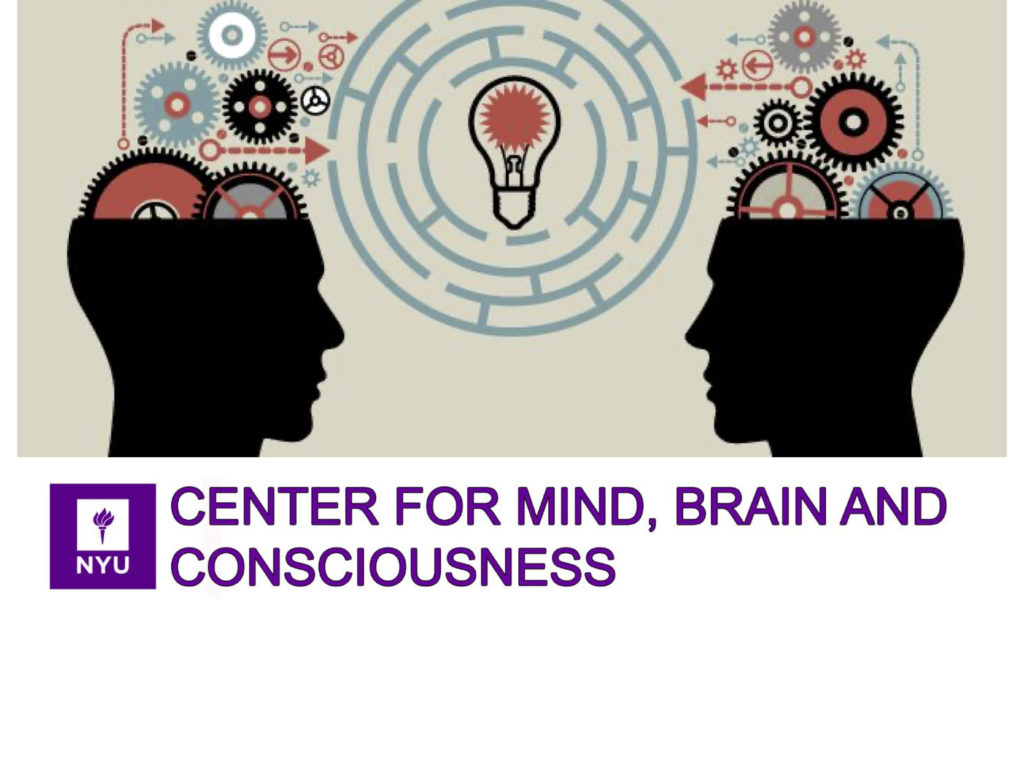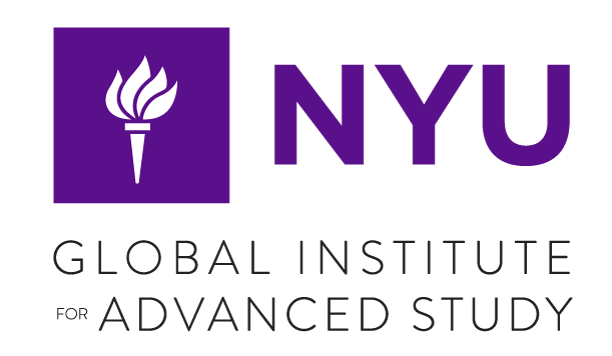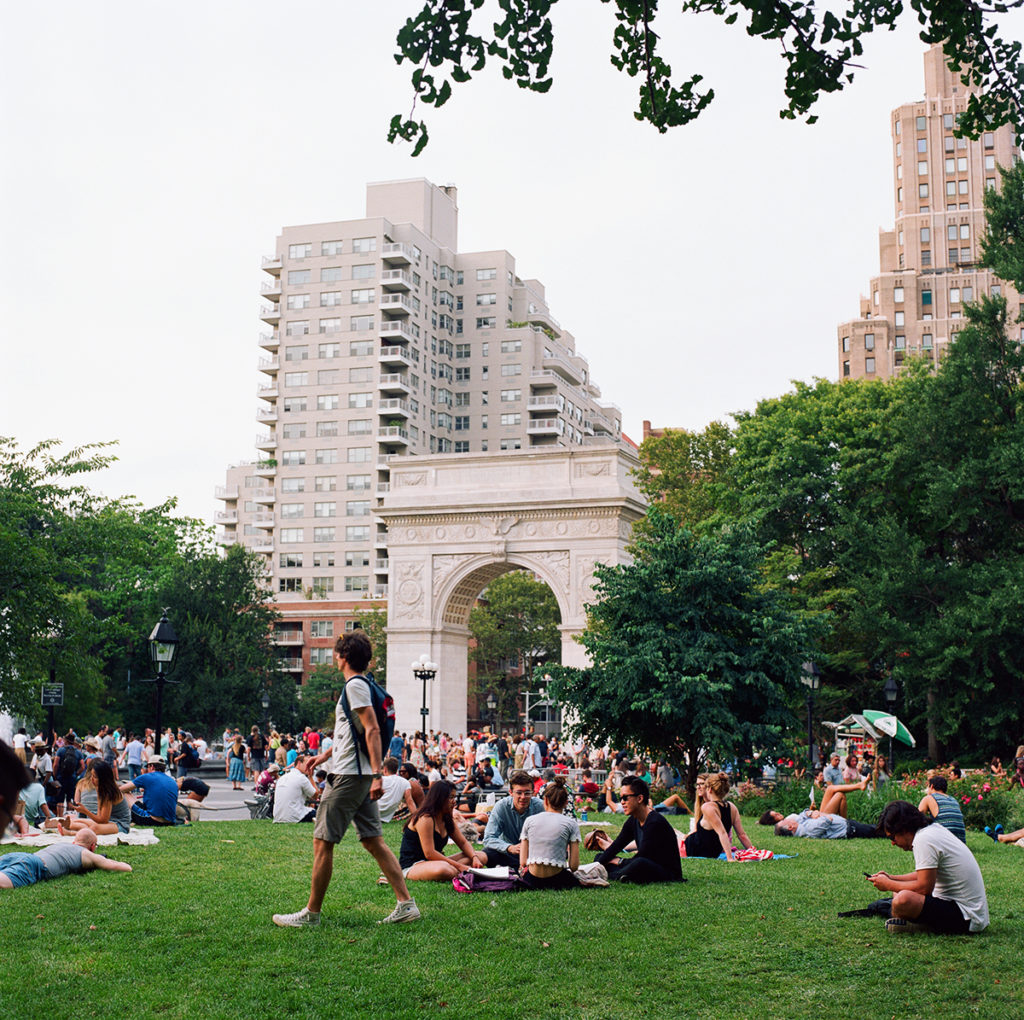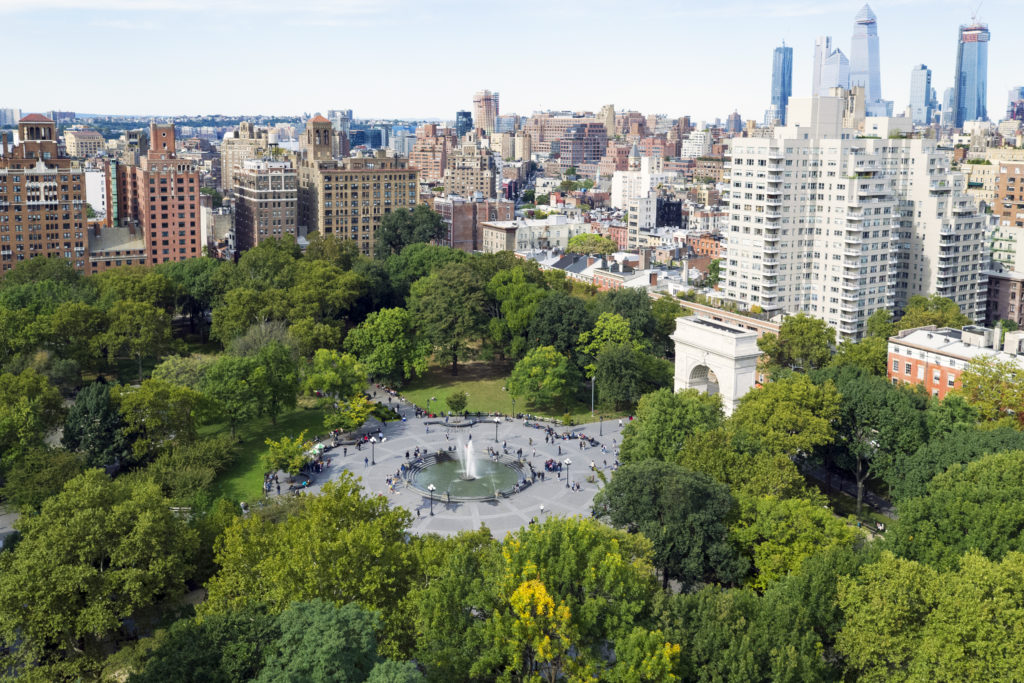Association for the Scientific Study of Consciousness
New York University
June 22-25, 2023
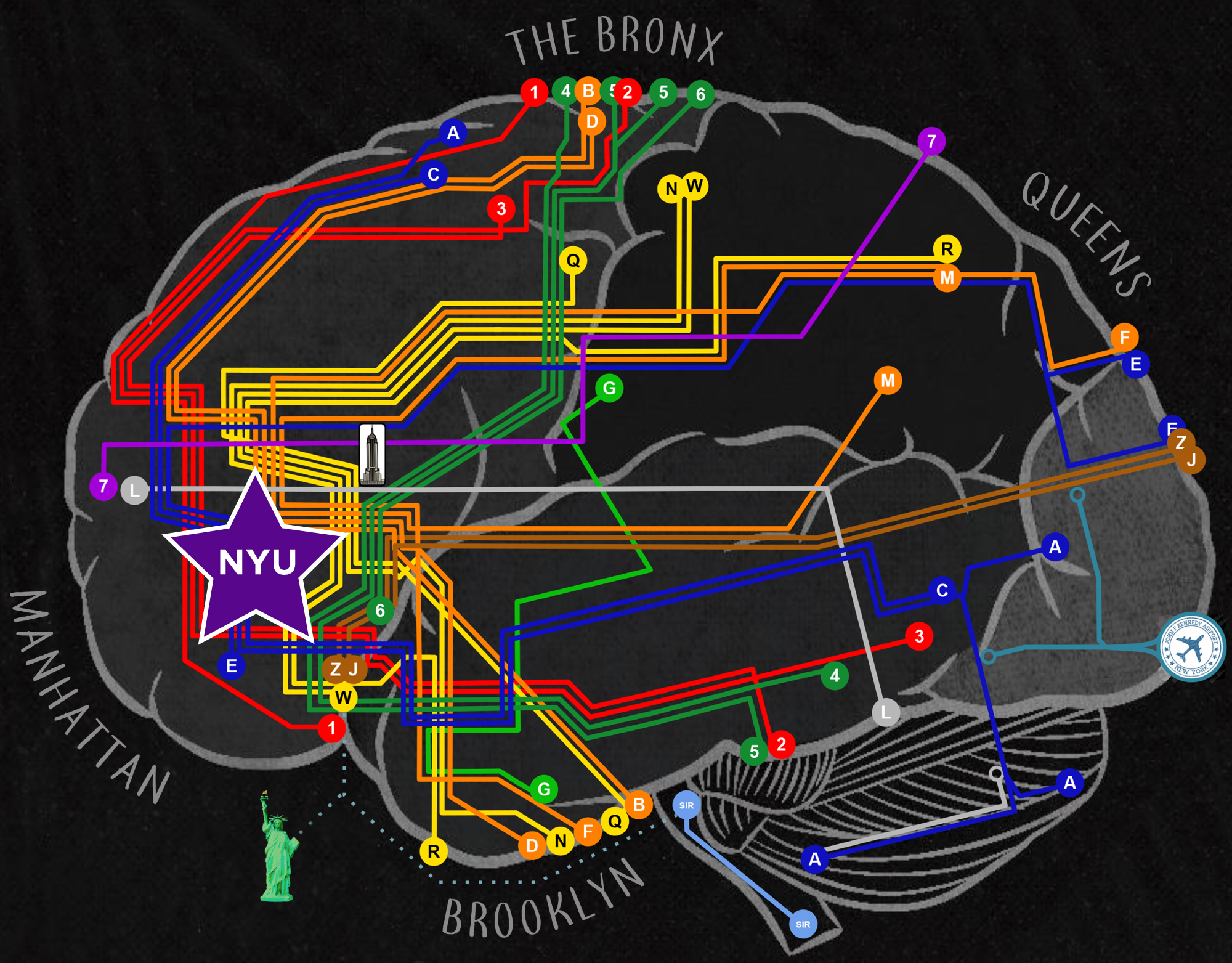
Welcome
The 26th annual meeting of the Association for the Scientific Study of Consciousness was held at New York University on June 22-25, 2023.
Conference registration is now closed. A full conference program is available.
Please direct any inquiries to ASSC26@nyu.edu.
Ned Block and David Chalmers, Conference Directors
Keynote Speakers
We are delighted to host the following keynote speakers:
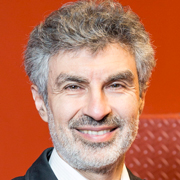
Prof. Yoshua Bengio
Université de Montréal; Mila – Quebec AI Institute; IVADO; Canada CIFAR AI Chair
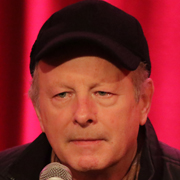
Prof. Joseph LeDoux
New York University; President of the ASSC
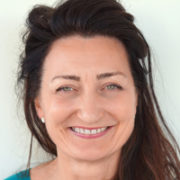
Prof. May-Britt Moser
Norwegian University of Science and Technology
Photo: Rita Elmkvist-Nilsen,
Kavli Institute for Systems Neuroscience

Prof. Thomas Nagel
New York University, Emeritus
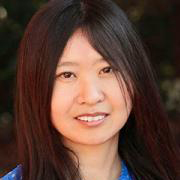
Prof. Doris Tsao
University of California, Berkeley and Howard Hughes Medical Institute
Program
A summary of the program is shown here. The conference program is available for download in pdf form, as is a comprehensive list of abstracts.
A mobile program for smartphone use is available to conference registrants using the Whova app, which can be downloaded here for both iOS and Android. For access through Blackberry or Windows Phone, click here
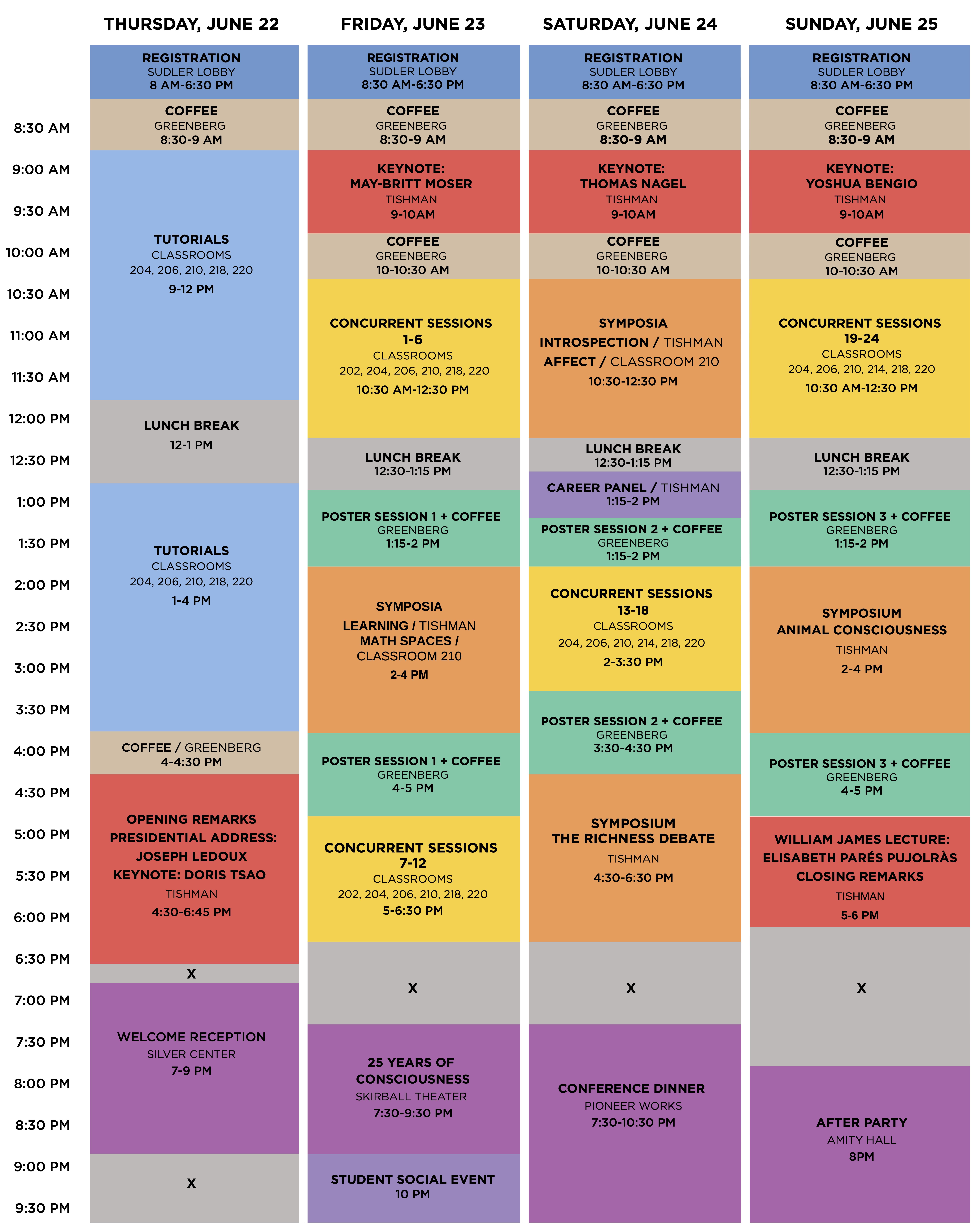
Conference Location
ASSC 26 took place at 40 Washington Square South, in Vanderbilt Hall, the home of the NYU Law School. This location is right on Washington Square in the heart of Greenwich Village in downtown Manhattan. Within five minutes walk are many food, drink, and entertainment options, from famous restaurants and clubs to cheap takeout food and free music on the square.
Registration for ASSC 26 is open. Now that the early registration deadline has passed, the registration fee for ASSC members is $450 (faculty or equivalent), $350 (post-docs or equivalent), or $200 (students). Registration for ASSC non-members is $600.
On the registration site, you may optionally also register for tutorials, and the conference dinner.
If you are an ASSC member, please log in with your ASSC credentials and then return to this page to access the ASSC member registration page. If you are a nonmember or past member, you are welcome to join ASSC here. If you would like to register for ASSC 26 as a nonmember, please go to the ASSC 26 nonmember registration page.
Tutorials
ASSC 26 featured eleven tutorials, held on the morning and afternoon of June 22, as follows. Participation in tutorials requires an additional fee per tutorial of $65 (non-student) or $35 (student). Each tutorial lasted approximately three hours with a short break in the middle. If fewer than 10 participants registered for the tutorial, the tutorial was canceled in advance of the meeting, and tutorial registration fees refunded.
Morning Tutorials
Philosophical Theories of Consciousness
Speakers: Rocco J. Gennaro (University of Southern Indiana)
Abstract: This tutorial will open with an explanation of the general problem of consciousness and various senses of the term ‘conscious.’ Traditional philosophical theories of mind and consciousness are then first introduced largely under the umbrella of the distinction between dualism and materialism (or ‘physicalism’). For example, we will examine such dualist views as substance dualism, property dualism, and epiphenomenalism. On the materialist side, we will critically examine identity theory and some neural theories of consciousness. I will introduce global (neuronal) workspace theory, recurrent processing theory, multiple drafts theory, and attended intermediate level theory which are also broadly functionalist-physicalist theories themselves. Some other somewhat “non-standard” views are also described, such as idealism and panpsychism. Finally, various versions of representationalism are presented, such as first-order representationalism (FOR), higher-order thought (HOT) theory, and self-representationalism. Some questions to be addressed are: What are some of the main arguments for, and objections to, the above theories? Can any materialist theory offer a viable reductionist account of consciousness? Are any of them able to answer the “hard problem” of consciousness or close the “explanatory gap” between first-person subjective experience and a more third-person scientific approach? How does holding a dualist or other position help? What makes a mental state a conscious mental state? Strengths and weaknesses of each theory are emphasized. Authors to be discussed include R. Descartes, David Chalmers, Colin McGinn, Bernie Baars, Victor Lamme, Frank Jackson, Thomas Nagel, Daniel Dennett, Jesse Prinz, David Rosenthal, William Lycan, Michael Tye, Uriah Kriegel, Robert Van Gulick, and others.
Tutorial Outline:
Introduction/Terminology; Different Senses of ‘Conscious’ (approx. 10 minutes)
Dualist Theories of Consciousness: substance dualism, property dualism, and epiphenomenalism (30 mins.)
Physicalist Theories, e.g. identity theory and neural theories (25 mins)
Global (neuronal) workspace theory, recurrent processing theory, multiple drafts theory, attended intermediate level theory (25 mins)
Break (approx. 10 minutes)
Other theories, e.g. idealism and panpsychism (20 mins)
First-order representationalism (10 mins)
Higher-order thought (HOT) and higher-order perception (HOP) theory (20 mins)
Self-representational and hybrid representational theories (20 mins)
Conclusions; future directions (5-10 mins.)
Mathematical consciousness science for the working consciousness researcher
Speakers: Johannes Kleiner (Ludwig Maximilian University of Munich & Association for Mathematical Consciousness Science), Lenore Blum (Carnegie Mellon University & UC Berkeley & Peking University & Association for Mathematical Consciousness Science), Ryota Kanai (Araya Inc. & Association for Mathematical Consciousness Science), Wanja Wiese (Ruhr Universität Bochum & Association for Mathematical Consciousness Science)
Abstract:
Mathematical Consciousness Science (MCS) is the application of formal and mathematical tools in the quest to understand consciousness. The goal of this tutorial is to demonstrate how mathematical methodologies can be useful to those working in the Scientific Study of Consciousness.
To this end, the tutorial offers four short presentations and one discussion session. The presentations give examples of MCS research and explain how they might be helpful for those working empirically, theoretically or conceptually. The discussion session focuses on problems which participants face in their own research, and seeks to explore whether and how MCS can be of help in solving these problems.
Session 1: The Conscious Turing Machine
In this session, we consider consciousness from the perspective of Theoretical Computer Science (TCS), a branch of mathematics concerned with understanding the underlying principles of computation and complexity, and consequences of limited resources. In the spirit of TCS, a simple mathematical model, the Conscious Turing Machine (CTM), is defined. Explanations for a number of phenomena generally associated with consciousness are given, and features relevant to those interested in developing minimal and substrate independent models of consciousness are highlighted.
Session 2: Consciousness qua Mathematical Spaces
Many theories of consciousness use colloquial language (“stimulus perceived consciously”, etc.) to model conscious experience. This works fine if a theory only addresses individual modalities, but breaks down if conscious experience as a whole is concerned. The goal of this session is to explain how mathematical spaces can be used to represent conscious experiences, and how this can be applied to develop, analyse and improve theories of consciousness. As an example, we consider GNWT and explain how it can be extended to explain conscious content in as much detail as IIT.
Session 3: Introduction to Deep Learning Concepts relevant for Consciousness Research
This session will introduce various computational concepts commonly used in the context of AI research (e.g. latent space and transformer) that may be also useful for consciousness researchers for developing and clarifying their own theoretical ideas. The benefit of considering concepts from AI research is that they provide concrete, implementable descriptions for often abstract, less precisely defined concepts discussed in consciousness research. We hope that this talk will help consciousness researchers to discover new relevant ideas they can incorporate into their development of theories and motivations for novel experimental paradigms.
Session 4: Mathematical Philosophy of Mind
This session explains which role philosophical research has in MCS and provides participants with suggestions of how their own work can benefit from, or contribute to, Mathematical Philosophy of Mind:
1) By clarifying theories and concepts (such as representation or qualia), philosophical work can provide input for mathematical models of consciousness.
2) Drawing on mathematical models of consciousness, philosophical work can establish connections to philosophical debates on consciousness (e.g., about structuralism and holism).
3) From a meta-theoretical perspective, philosophical work can specify the scope and type of understanding and explanation afforded by mathematical models of consciousness.
A practical guide to EEG analysis tools used in the neuroscience of consciousness and cognition
Speakers: David W. Zhou (Brown University), Thomas Donoghue (Columbia University), Emily P. Stephen (Boston University), Matteo Fecchio (Massachusetts General Hospital)
Abstract:
In the neuroscience of consciousness, electroencephalography (EEG) is an invaluable tool to non-invasively study human brain function. Indeed, the EEG allows the study of mechanisms that may hamper specific brain functions – for example, slow waves in the awake EEG are often linked to pathological dynamics. EEG is currently used as a clinical tool to monitor levels of consciousness during anesthesia and in patients with disorders of consciousness. In the process of using EEG to understand conscious states, methodological choices in data analysis figure heavily in the development of scientific theories and vice versa. With recent developments in methods for analyzing EEG data, it is essential that practitioners appropriately apply analysis tools.
In this tutorial, the presenters will provide a hands-on introduction to key methodological concepts and popular tools used in the analysis of EEG brain signals. Working from interactive notebooks, this tutorial is designed as an approachable guide to neural data analysis for both investigators and trainees. Attendees will also receive a brief introduction to each method’s statistical and theoretical underpinnings. We will provide an overview of EEG data analysis techniques that target biomarkers of consciousness, grouped into four categories:
1. Slow waves: EEG slow waves are a common feature of all unconscious states, and are thought to reflect up- and down-states in the spiking of cortical neurons. Recent research suggests that different levels of unconsciousness are differentiated by the entrainment of high-frequency activity to the slow wave in frontal vs posterior EEG. This tutorial will cover time-domain methods for decomposing the EEG signal into slow waves and high-frequency activity, and relating them to each other (Hilbert-based methods, State space oscillators, phase-amplitude coupling).
2. Aperiodic neural activity: States of consciousness dramatically differ in overall signal power. This can be seen in the slope of the power spectrum, which reflects aperiodic (non-oscillatory) activity. Measuring aperiodic activity is important in order to detect band-limited oscillations, and as a feature of interest that relates to underlying spiking levels, and to the balance of excitation and inhibition. This tutorial will cover spectral parameterization (specparam, formerly fooof), a method for measuring aperiodic activity and neural oscillations.
3. Synchrony: Measures of coupling between EEG recording sites often invoke the notion of synchrony as coherence or phase locking. These measures are sometimes used, in turn, to infer graph edges in network analyses. This tutorial will define and compare pairwise coherence, phase locking indices, and global coherence, as well as demonstrate some of their uses in the inference of functional connectivity.
4. Complexity: Over the past years, complexity-related measures have been shown to be reliable biomarkers of consciousness across several conditions. Among them, the perturbational complexity index has shown unprecedented sensitivity and specificity in detecting capacity for consciousness in healthy controls and patients with disorders of consciousness. This tutorial will cover measures of complexity (Perturbational Complexity Index, Lempel-Ziv complexity).
The interactive portion of the tutorial will be followed by a panel discussion and Q&A session regarding analytical approaches and their applications to consciousness science.
Analyzing Body-Brain Interaction
Speakers: Esra Al (Columbia University), Leah Banellis (Aarhus University), Ignacio Rebollo (The German Institute of Human Nutrition)
Abstract:
Visceral signals have a profound influence on cognition and brain activity. Recently, there has been a surge of interest to integrate the recording of visceral signals in psychology and cognitive neuroscience experiments, probing links between interoception, conscious perception, and brain activity. In this tutorial, we will introduce different ways of analyzing bodily signals from internal organs such as the heart, stomach, and lungs, and their interaction with behavior and brain activity.
In the first part of the tutorial, we will explain how to analyze perception across the cardiac and respiratory cycles. For this purpose, we will explain how to perform these analyses considering i) the biphasic nature of cardiac (i.e., systole and diastole) and respiratory activity (i.e., inspiration, expiration) as well as ii) their oscillatory (circular) nature. We will also explain the analysis of heartbeat-evoked potentials, through which cardiac activity can influence the conscious perception of sensory stimuli. We will go step by step to explain the possible problems one can encounter during this analysis and how to overcome them. In the second part, we will introduce the measurement of cardiac and respiratory interoception using psychophysics and computational models. In the third part, we will present an overview of how to acquire and analyze the electrogastrogram, a non-invasive technique to measure activity from the stomach. We will examine in depth the different acquisition and preprocessing steps of this technique, including electrode placement, channel selection, and signal processing. We will also introduce methods to quantify the connectivity pattern of the stomach with fMRI brain activity.
In all these sessions, we will have hands-on exercises which will focus on code examples to perform these analyses using R and Matlab. Therefore, participants are required to bring their laptops. After the workshop, participants will have a thorough overview of how to integrate the recording and analysis of these signals into their research.
Measures and models of metacognition
Speakers: Stephen Fleming (University College London)
Abstract:
In this tutorial, we will introduce the different measures and models of metacognition that can be applied to confidence rating data across a range of tasks. The first part of the tutorial will cover the conceptual distinction between metacognitive sensitivity, efficiency and bias, and explore the pros and cons of different approaches to measuring these parameters. The second part will focus on the theory underpinning the meta-d’ model (a gold standard measure of metacognitive sensitivity), and its powerful and flexible hierarchical Bayesian extension (HMeta-d). We will introduce the model in an accessible way and discuss practical issues that arise when fitting computational models to behavioural data. After a break, the remainder of the tutorial will be hands-on, focused on stepping through code examples using the toolbox, and building confidence amongst participants in being able to use these tools in their own projects. We will cover between- and within-subject designs, and how to implement flexible regression models that estimate the link between metacognitive efficiency and experimental factors or individual differences. In the final part of the tutorial we will close by exploring next-generation computational models of confidence, and consider the relationship between simpler “”measures”” and more complex “”models”” of metacognition.
To follow along with the code examples, participants will need a laptop with Matlab and JAGS installed (a Python wrapper is under development). The first half of the tutorial will focus primarily on foundational and theoretical issues, with the second half allowing participants to work with the code examples themselves, with regular guidance and supervision. This tutorial has been delivered successfully at previous ASSC meetings (in 2017 in Beijing and in 2022 in Amsterdam), at the Zurich Computational Psychiatry Course (in 2019 and 2021) and at the UCL-PSL Summer School on Consciousness and Metacognition (in 2021). The code is thoroughly documented and freely available and will be a valuable resource for participants to apply to their own data after the meeting (https://github.com/metacoglab/HMeta-d/blob/master/CPC_metacog_tutorial/cpc_metacog_tutorial.m).
Afternoon Tutorials
Communicating Consciousness Science to Funders and General Public
Speakers: Megan Peters (UC Irvine), Brian Odegaard (University of Florida), Nora Bradford (UC Irvine)
Abstract: Because consciousness science suffers from language barriers with other fields, successfully applying for consciousness research funding can be a challenge. Communicating the excitement, rigor, and importance of consciousness science to the general public can prove harder still. These challenges in part stem from unfamiliarity and in part from general skepticism about consciousness science itself and its perceived overlap with fringe or pseudoscience, but this skepticism is significantly exacerbated – indeed, perhaps fueled – by difficulties in communicating the goals, approaches, and promise of consciousness research to scientists in related disciplines (perception, attention, neuroscience, medicine, AI, etc.) and to the educated general public due to specialized vocabularies. At worst, these communication barriers can result in a general perception that consciousness science is pseudoscientific; at best, they muddy outsiders’ understanding of our burgeoning and rigorous field, reduce probability that funding applications will be successful, and reduce the impact of scientific advances on basic science, medicine, ethics, and more. And the relative lack of persuasive communication about consciousness science to funding agencies and the general public, in turn, sets the stage for more skepticism.
Through this tutorial, we hope to (1) help consciousness science researchers develop tools and language to effectively communicate about their research to people outside of their field, including funders; and (2) create connections and collaborations between participants as they brainstorm fundable consciousness-related projects and communication strategies together. Success in these goals is paramount to the field of consciousness science as it continues to proliferate and influence related fields such as perception, medicine, AI, and more – especially as AI research advances and autonomous systems become more complex. The time is ripe for a concerted and unified effort from the ASSC community to improve our collective communication for the benefit of our field, both with increased funding for empirical studies and improved communication of our exciting findings to the world.
The tutorial will include three core activities:
Tutorial presenters MP, BO, and NB will share insights from their recent “Fund Consciousness Science” workshop (generously funded by the Templeton World Charity Foundation), which brought together 40 early-career researchers in consciousness science and related disciplines for two days to discuss overlapping interests and expertise. The workshop also included senior researchers in consciousness science and nearby disciplines who had successfully competed for funding via mainstream mechanisms (e.g. NSF, NIH), as well as program officers from four United States based organizations (NIH, NSF, Air Force Office of Scientific Research, Office of Naval Research) to help guide and hone the messaging to be compelling and persuasive to a broader audience of scientists and grant reviewers from outside consciousness science.
We will also include presentations and insights on presenting consciousness science in written and oral form to non-specialist audiences, including public outreach.
An interactive workshop component will group workshop attendees based on their answers to surveys distributed before the meeting. Small groups will discuss and brainstorm how they can hone their messaging to best convey their science – and its promise – to both funding agencies and the general public.
Shared subcortical arousal mechanisms across diverse perceptual and volitional modalities
Speakers: Hal Blumenfeld (Yale), Sharif Kronemer (National Institute of Mental Health), Kate Christison-Lagay (University of New Hampshire), David Jin (Yale)
Abstract: The majority of consciousness research focuses on cortical mechanisms. In addition, most paradigms for studying consciousness emphasize perceptual awareness within a single modality such as vision or hearing. In this tutorial, we will discuss recent findings suggesting that dynamic transient changes in subcortical arousal play a critical role in determining whether sensory or motor events enter consciousness. In addition, rather than focus on one modality, we will examine converging data across perceptual modalities including vision, hearing and touch, as well as from the volitional modality of awareness of action. This approach will allow participants in the tutorial to arrive at a consensus for subcortical arousal nodes crucial for consciousness. The tutorial presenters have diverse backgrounds and range from junior to senior investigators. They will present not only their own work, but will include a broad overview of the field, and the format will be highly interactive to stimulate audience participation, discussion, and productive dialogue. The tutorial will begin with an overview of subcortical and cortical neuroanatomy and neurophysiology in relation to consciousness, presented by Hal Blumenfeld. His discussion will include the recent detect, pulse, switch and wave hypothesis intended to summarize multiple subcortical and cortical mechanisms that converge to produce consciousness. Next Sharif Kronemer will discuss recent work from visual conscious perception using techniques including scalp and intracranial electroencephalography, direct measurements from the human thalamus, and fMRI. These data, as well as results from a novel no-report paradigm based on machine learning applied to eye metrics, will demonstrate robust findings from subcortical systems including the intralaminar thalamus and upper brainstem arousal systems. Kate Christison-Lagay will next present results from auditory and tactile perception studies, again including multiple experimental techniques. Her discussion will lead to converging results that support shared aspects of the detect, pulse, switch and wave hypothesis for conscious perception across modalities. Next, David Jin will discuss a novel experimental paradigm to investigate awareness of action. He will show through electrophysiological and pupillary measurements that both static and transient changes in arousal distinguish actions with versus without awareness. Finally, all speakers will contribute to a discussion of meta-analysis approaches across modalities. These approaches will enable shared dynamic subcortical arousal mechanisms to be identified, which participate in conscious awareness throughout diverse sensory and motor tasks.
Robust methods for within-participant analyses of neuroimaging data: Bayesian Prevalence and Information Theory
Speakers: Andres Canales-Johnson (University of Cambridge), Robin A.A. Ince (University of Glasgow)
Abstract:
In the experimental study of consciousness, we typically observe large variations in neurobehavioural data between individuals, and non-Gaussian distributions of effects, both of which pose challenges for the typical statistical approach. Problematically, statistical analysis of neuroimaging data focuses almost exclusively on the population mean: the average effect in the population, which is inferred from the average effect in the participants observed in the experiment. We present Bayesian prevalence which is a simple method that formally generalises within-participant experimental results to the population. Any tools, tests or models for studying behaviour or neuroimaging analysis can be applied separately to each participant. Each participant then serves as an independent replication of the experiment, which protects against many of the causes of replication issues which have been recently highlighted. Differences in effect prevalence can be evaluated between groups or conditions. We show how this can be applied to behavioural or neuroimaging results from any experiment, using functions in Matlab, Python or R or with a simple webapp.
Information theory provides a unifying statistical approach in which many different statistical effects can be quantified with effect sizes on a common scale of bits. We present Gaussian-Copula Mutual Information (GCMI), a simple computationally efficient method to estimate information theoretic quantities such as mutual information (bivariate dependence), transfer entropy (connectivity), directed feature information (communication of specific stimulus information) and co-information (trivariate interaction). We discuss how these methods can be applied to event related designs related to the study of consciousness, and how they have particular advantages for non-parametric within-participant inference. Behavioural responses, neural responses in different areas or frequency bands, in phase vs power and in multivariate representations (MVPA) can all be evaluated on the common effect size scale, and quantitatively compared within participants.
Together, these two streams provide a new perspective on studies of consciousness: information theory provides tools to ask new questions of data, that go beyond bivariate statistical dependence to consider higher order interactions. They also allow for robust, computationally efficient non-parametric inference within individual participants. Combined with prevalence, this provides a different perspective on what can be learned from an experiment, beyond the typical significantly greater than zero population mean. We illustrate these with hands-on examples for EEG and LFP data.
References
1. Robin AA Ince, Angus T Paton, Jim W Kay, Philippe G Schyns (2021) Bayesian inference of population prevalence eLife 10:e62461.
2. Ince, R. A., Kay, J. W., & Schyns, P. G. (2022). Within-participant statistics for cognitive science. Trends in Cognitive Sciences.
3. Ince, R.A., Giordano, B.L., Kayser, C., Rousselet, G.A., Gross, J. and Schyns, P.G. (2017), A statistical framework for neuroimaging data analysis based on mutual information estimated via a gaussian copula. Hum. Brain Mapp., 38: 1541-1573.
The sensorimotor approach to phenomenal consciousness and its link to illusionism and relational approaches
Speakers: J. Kevin O’Regan (CNRS & Université Paris Descartes), Keith Frankish (University of Sheffield), Dave Ward University of Edinburgh)
Abstract:
1. Kevin O’Regan will present the Sensorimotor Approach to Phenomenal Consciousness, which purports to obviate the “hard problem” by taking a different metaphysical stance from most other theories of consciousness. Instead of “reifying” consciousness as a thing that is generated by brains, the sensorimotor approach considers that consciousness is simply a word we use to describe a collection of capacities to act (both physically and mentally). Careful analysis and cataloging of what those capacities consist in, reveals that everything that can be scientifically said about consciousness, and in particular about phenomenal consciousness, can be accounted for in normal scientific language. There is no “explanatory gap” between the language of consciousness and the language of science. The approach makes empirical predictions and suggests research directions concerning change blindness, sensory substitution, color sensations, the notion of space, pain, the sense of body ownership, and “what it’s like” to have different types of experience.
Recent relevant papers:
https://psyarxiv.com/xhukf; https://psyarxiv.com/6xzde/; https://whatfeelingislike.net/
2. Keith Frankish (with a pre-recorded or zoom presence) will present a talk on illusionism and its relation to the sensorimotor approach. Illusionists deny that consciousness involves awareness of intrinsic, non-functional properties of experience (“phenomenal properties” or “qualia”) and hold that belief in such properties is the result of an introspective illusion. This talk will introduce illusionism, set out some criteria for a successful illusionist theory of consciousness, and argue that the sensorimotor approach meets them. (It is true that sensorimotor theorists sometimes employ terms illusionists shun, but the difference is not substantive.) The talk will conclude that, although sensorimotor theory is not the only approach consistent with illusionism, it has a claim to be the most promising one.
Recent relevant papers:
https://www.ingentaconnect.com/content/imp/jcs/2016/00000023/f0020011/art00002
https://www.tandfonline.com/doi/abs/10.1080/02643294.2020.1729111
3. Dave Ward’s talk will explore how a sensorimotor approach can be usefully integrated with three other strategies for explaining the phenomenal character of perceptual consciousness: i) ‘ability hypotheses’ that hold that puzzles about perceptual consciousness are generated partly by the distinctive kind of practical knowledge a perceiver has of her sensory relation to the environment; ii) ‘naïve realist’ approaches that hold that the phenomenal qualities of perceptual experience are mind-independent qualities of perceived objects; iii) ‘bio-enactivist’ approaches that argue that the self-sustaining organisation of some living systems brings with it a minimal form of conscious awareness. Understanding how each strategy is related to the sensorimotor approach these apparently distinct strands of work on consciousness as complementary, rather than competing. It will be argued that these strategies can be integrated into a unified sensorimotor approach to perceptual consciousness.
Recent relevant papers:
Ward, D. (Forthcoming). Sensorimotor Relationalism and Conscious Vision. The Philosophical Quarterly.
Ward, D., Silverman, D., & Villalobos, M. (2017). Introduction: The varieties of enactivism. Topoi, 36(3), 365-375.
Ward, D. (2012). Enjoying the Spread: Conscious Externalism Reconsidered. Mind 121 (483), 731-751.
4. There will be a general discussion (duration about 1 hour).
Integrated Information Theory 4.0
Speakers: William Marshall (Brock University), Melanie Boly (University of Wisconsin-Madison)
Abstract: The first part of the workshop will be an overview of Integrated Information Theory. We will start by discussing the uniqueness of the scientific study of consciousness and the need to account for the subjective properties of consciousness in objective terms. We will then outline the research program employed by IIT: from an axiomatic characterization of consciousness, to a postulated physical substrate and explanatory identity, and finally to a mathematical framework for assessing the quantity and quality of consciousness in a physical system.
In the second part of the workshop we will focus on recent developments to the mathematical framework of IIT (“IIT 4.0”). We will describe various aspects of the mathematical framework in more detail, and discuss how they are motivated by the axioms/postulates of the theory. The first half will focus on identifying physical substrates of consciousness based on a measure of system integrated information. The second half will demonstrate how the postulates of IIT are applied to “unfold” the cause-effect structure of a system, which requires identifying the causal distinctions and relations that jointly specify the system’s cause-effect structure.
Finally, we will conclude the workshop with a session of discussion and questions.
From our experience at ASSC25 in Amsterdam, we believe that an IIT 4.0 tutorial would be in great demand at the ASSC26 in New York.
MATERIALS / ACTIVITIES
The workshop will include worked out examples of applying the mathematical framework of IIT, and scripts to compute these examples in PyPhi will be made available to all participants. Suggested readings include:
General overview
Ellia F, Hendren J, Grasso M, Kozma C, Mindt G, P. Lang J, M. Haun A, Albantakis L, Boly M,
Tononi G (2021) Consciousness and the fallacy of misplaced objectivity. Neurosci Conscious 2021:1–12.
Tononi G, Boly M, Massimini M, Koch C (2016) Integrated information theory: from consciousness to its physical substrate. Nat Rev Neurosci 17:450–461.
Recent Developments
Haun A, Tononi G (2019) Why Does Space Feel the Way it Does? Towards a Principled Account of Spatial Experience. Entropy 21:1160.
Marshall et al. (in prep) System integrated information.
IIT 4.0 (in prep)
SCHEDULE:
The workshop will be divided into three sections of 40 min each with two 10 minute breaks in the middle. The first part of the workshop will focus on an overview of IIT, the middle section will focus on identifying the PSC, and the final section on unfolding the cause-effect structure. We conclude with an overview of recent empirical work.
General overview (0:00 – 0:40)
Characterizing phenomenology: essential properties
From the phenomenology to the mechanisms of consciousness
Break (0:40 – 0:50)
Identifying physical substrates (0:50 – 1:30)
Overview of IIT’s mathematical framework
System integrated information
Unfolding a the cause-effect structure of a system (1:30 – 2:10)
Break (2:10 – 2:20)
Discussion and Questions (2:20 – 3:00)
Symposia
ASSC 26 featured six symposia, held during the main conference on June 23-25, as follows:
Affective impact on perception: Frédérique de Vignemont, Marisa Carrasco, Judith Domínguez-Borràs & Patrick Vuilleumier, Hilla Jacobson
Animal consciousness beyond mammals: L. Syd M Johnson, Jonathan Birch, Andrew Crump, Matilda Gibbons, Peter Godfrey-Smith
Broad-spectrum introspection: Metacognition and self-awareness across diverse domains: Jorge Morales, Elisa Filevich, Tony Cheng, Sarah Garfinkel
Mathematical spaces for conscious experiences: Johannes Kleiner, Andrew Lee, Catherine Tallon-Baudry, David Rosenthal
The interplay between consciousness and learning: Empirical, methodological, and theoretical advances: Lina Skora, Ryan Scott, Răzvan Jurchiș, Gaetan Mertens, Eva Jablonka
The richness debate: Michael Cohen, Ned Block, Liad Mudrik, Michael Pitts
Evening Events
Thursday June 22: Opening Reception (NYU Silver Center, Washington Square East)
Friday June 23, 7:30pm: 25 Years of Consciousness (NYU Skirball Theater). An intellectual/musical evening (open to the public) on the state of the science of consciousness, around a quarter-century after the first ASSC conference in 1997.
Part one introduced key issues about consciousness, and present a 25-year bet from 1998 between Christof Koch and David Chalmers about whether the neural correlates of consciousness would be discovered by 2023.
Part two surveyed progress over the last 25 years, including the development of key theories of consciousness such as global workspace theory and integrated information theory.
Part three unveiled for the first time the full results of an adversarial experiment (sponsored by the Templeton World Charity Foundation) testing predictions of these two theories, and used these results to help resolve the 25-year bet.
Featuring Heather Berlin (MC), Ned Block, Melanie Boly, David Chalmers, Stanislas Dehaene, Daniel Dennett, Christof Koch, Lucia Melloni, Liad Mudrik, Per Snaprud, and others, with musical entertainment by Joe LeDoux and the Amygdaloids and by Baba Brinkman.
Friday June 23, 10pm: Student social (Gaia Nomaya)
Saturday June 24, 7:30pm: Conference dinner at Pioneer Works, a cultural center devoted to art, science, and their interaction. Located in a former warehouse in Red Hook, Brooklyn, and accessible via ferry, subway, car, or bus.
Sunday June 25: End of conference drinks (Amity Hall)
ASSC 26 Scientific Committee
- Ned Block (co-chair)*
- David Chalmers (co-chair)*
- Richard Brown
- Olivia Carter
- Lucie Charles
- Steve Fleming
- Biyu He
- Joe LeDoux
- Matthias Michel*
- John Morrison
- Liad Mudrik
- Claudia Passos
- Megan Peters
- Tony Ro
- Luke Roelofs*
- Simon van Gaal
Satellite workshops
Perceptual Metacognition Satellite Meeting
The Perceptual Metacognition satellite meeting happened on Wednesday, June 21, 2023, before the main conference, at the Center for Neural Science, NYC.
All the information can be found here.
Animal and AI Consciousness satellite meeting
A post-conference satellite workshop on Animal and AI Consciousness happened on Monday, June 26, 2023 in Jurow Hall in the NYU Silver Center.
Sponsors
ASSC 26 is made possible by the following sponsors:
